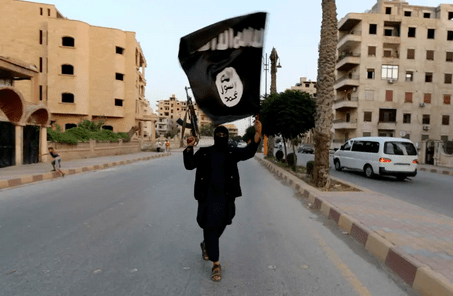
Islamic State terrorist attacks warn of a re-emergence in northeast Syria
ISIL (ISIS) is believed to have carried out a spate of attacks in the past week in northeastern Syria, an indication, experts and monitors have said, that the group is potentially on the rise once again.
A suspected ISIL attack at a Ramadan iftar gathering near Deir Az Zor on Wednesday killed seven people, including the former spokesperson of the United States-backed Kurdish-led Syrian Democratic Forces, Nouri Hamish.
The brazen nature of the attack has alarmed residents, and analysts and humanitarian agencies now fear that increased attacks could risk life-saving humanitarian work in the impoverished region, and put millions of vulnerable people at risk of attack.
ISIL has increased its attacks in northeast Syria after US special forces assassinated then-leader Abu Ibrahim al-Qurayshi and his official spokesperson.
Current ISIL spokesman Abu Omar al-Muhajir called on ISIL fighters to avenge their deaths on April 17 in an audio message called “Vengeance for the Two Sheikhs”.
According to the northeast Syria-based media group Rojava Information Center, ISIL has conducted at least 20 attacks since then.
“[The attacks have occurred] particularly in Deir Az Zor, but also in areas usually spared [from] ISIS violence, such as Manbij, Raqqa, and Jazeera,” Sasha Hoffman, a researcher with the Rojava Information Center, told Al Jazeera. “In just 10 days, ISIS carried out more confirmed attacks in northeast Syria than in February and March combined.”
Hoffman believes the timing of ISIL’s operation was strategic, as “international attention is elsewhere” – notably in war-torn Ukraine.
“The move is likely as much taking advantage of the geopolitical vacuum as it is attempting to focus world attention back on the group,” the researcher said.
According to the Syrian Observatory for Human Rights, a UK-based war monitor, ISIL carried out at least 82 other armed operations in 2022, in addition to the Thursday shooting, killing 63 civilians and SDF fighters.
ISIL once controlled an area across Syria and Iraq equivalent to the size of the United Kingdom, but has since lost its de facto state.
It has since transformed with sleeper cells littered across towns and villages, where it conducts guerilla-style attacks.
Source: Al Jazeera





